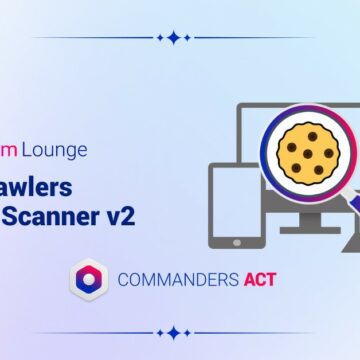Server-side tag management: what advantages does it offer?
27/04/2021 |

The “server-side” tag management technique is nothing new. But at a time when browsers are subject to multiple constraints and personal data require heightened vigilance, “server-to-server” tag management offers many advantages.
“Server-side”, “server-to-server” or “tagless” tag management… different ways of referring to the same technique. It enjoyed a peak in popularity when it was made available in Google Tag Manager in the summer of 2020, but the technique is far from new: publishers such as Commanders Act have been offering server-side tag management for several years.
The current context, however, argues for brands to pay greater attention to the subject: with consent collection becoming increasingly regulated, and browsers clamping down on third-party cookies, server-side tag management offers significant benefits.
“Browser-side” versus “server-side”
In concrete terms, it’s about offering an alternative to the way tags usually work. Even today, in most cases, when a browser loads a page, tags are triggered and scripts are served from a TMS (Tag Management System) and executed in the browser. So it’s the browser that does much of the heavy lifting: it collects the data, processes it and “talks” directly to the providers of the services associated with the tags. If 40 tags are embedded in a page, the browser sends out 40 requests to interact with the designated services.
In “server-side” mode, as the name suggests, everything happens on the server-side. Instead of issuing 40 requests, the browser (assuming all the tags are processed server-side) calls a service and… that’s it. The TMS does not send back any scripts to be run. All the processing – crunching the data and distributing it to the various partners – is handled server-side.
Server-side tag management, or how to escape browser constraints
So what do you gain by shifting the workload from browser to server? The first thing is almost self-evident: performance. Longer page loading times equate to higher bounce rates – up to 90% for a loading time in excess of five seconds. By relieving pages of some of their scripts, server-side tag management helps reduce loading times, thereby optimising the user experience.
The technique also makes it possible to break free from the technical constraints linked to browsers: ad-blockers, with their blacklists that block calls to certain services from the browser, or simply cookie filtering mechanisms like Apple’s Intelligent Tracking Prevention (ITP). With server-side, calls are made from the server, beyond the reach of the ad-blockers. And as the service invoked on the server-side can be hosted on a sub-domain of the website (rather than on a third-party domain), it is not intercepted by ITP-type mechanisms. Of course, this in no way exempts you from complying with the rules on collecting consent.
A reliable and secure data-processing environment
This server-side approach can also be leveraged to make the processing of personal data more secure and reliable. When all this processing is done in the browser, it is inevitably exposed for almost anyone to see. Moving it server-side makes the tracked data invisible. Moreover, with the usual direct dialogue between the visitor’s browser and the partner’s services, there is always a risk of giving away a bit too much…
With server-side tag management, the website publisher has complete control over what is collected, processed and distributed to each partner, and is therefore able to guarantee visitors that the stated data processing rules really will be applied. In terms of reliability, meanwhile, server-side processing is also a way of reducing the discrepancies sometimes observed (due to browser constraints) between analytical and transactional data.
“Tagless”, a more technical implementation
If server-side tag management has so many benefits, why isn’t it more common? Fair question. Firstly, as stated earlier, because solutions like Google Tag Manager only recently began offering it. Secondly, because not all solutions currently support server-side operation – although it is rapidly gaining ground. And finally, because implementing and maintaining “tagless” data collection calls for proven skills. Switching from one mode to the other is a project in its own right, requiring close and sustained collaboration between the various technical teams so that the marketing team doesn’t lose any of its agility.
An investment that needs to be weighed against the benefits. “The server-side approach eliminates the obstacles and failures that often plague browser-side tags (network problems, ad blockers, etc.), which can make data up to 30% more reliable and complete,” stresses Michael Froment, CEO and Co-Founder of Commanders Act. Not forgetting the inestimable benefit directly linked to the brand’s image by keeping its commitments on personal data through the implementation of a much better controlled collection and processing environment.











